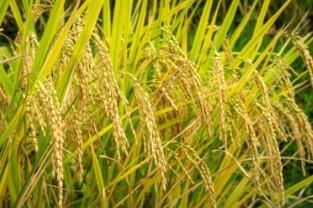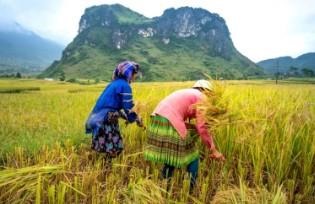More rice production can be produced while minimizing the crop’s environmental impact, new research suggests. And that’s important with global population projected to reach 9.8 billion by 2050 and with demand for rice on the rise.

A team of global researchers that includes Ted Wilson, Ph.D., director of the Texas A&M AgriLife Research and Extension Center at Beaumont, have studied rice yield gap and resource-use efficiency across 32 of the world’s top-producing rice cropping systems. (Stock photo)
A team of global researchers that includes Ted Wilson, Ph.D., director of the Texas A&M AgriLife Research and Extension Center at Beaumont, have studied yield gap and resource-use efficiency across 32 of the world’s top-producing rice cropping systems. These systems account for 70% of the rice-harvest area and 51% of rice production globally. Their research is highlighted in an article published in Nature Communications.
The research team found that the global rice production systems could increase production by 36% and all but eliminate excess nitrogen by focusing attention on a small number of cropping systems with large yield gaps and poor use of inputs. Key inputs to make a crop – water, pesticides, nitrogen, labor and energy – were evaluated.
“What we’ve found is most of these major rice cropping systems have room for improvement with regards to yield and resource efficiencies,” Wilson said. “These can easily be achieved and protect the environment for decades to come. The research outcomes are very strategic, certainly assisting in prioritizing global research and development with the overarching goal of the world having enough rice to meet the demands of future population projections.”
The lead writers are Shen Yuan, Ph.D., Huazhong Agricultural University; Bruce Linguist, Ph.D., University of California Davis; Patricio Grassini, Ph.D., University of Nebraska-Lincoln; and Wilson.
Future sustainability concerns
In evaluating yield-gap efficiencies, the researchers found several concerns about the sustainability of future rice cropping systems.
“We are seeing yield plateaus in major rice-producing regions such as California, China, Indonesia and South Korea,” Wilson said. “The second concern is that these regions consume as much as 30%, 14% and 10% of global use irrigation water, fertilizers and pesticides (respectively).”
The cost of labor and associated input costs make rice production less attractive to farmers in some regions, according to the research, especially where governments provide support mechanisms and subsidies.

Global rice production systems could increase production by 36% and all but eliminate excess nitrogen by focusing attention on a small number of cropping systems with large yield gaps and poor use of inputs. (Stock photo)
Yet the researchers say achieving as much as 70% to 80% yield potential is attainable for farmers who have access to stable markets, ample inputs and the resources of Extension services.
Texas rice implications
Wilson notes that the demand for Texas rice continues to escalate.
“We’re seeing the state’s population increasing in addition to the global growth,” Wilson said. “What’s hopefully a short-term threat to Texas rice growers is the cost of nitrogen fertilizer; while for at least the next five years, the lower quality of current hybrid varieties certainly poses a challenge with many international markets.”
Though high-quality inbred rice has been historically predominant in the state, Texas now produces a significant amount of long-grain hybrid varieties. While the long-grain hybrid varieties can lead to yields of 1,500 pounds or more per acre, they do give up some grain quality, which can turn away international buyers, Wilson said.
Two breeding programs at the Beaumont research center are led by Omar Samonte, Ph.D., Texas A&M AgriLife Research hybrid rice breeder, and Shyamal Talukder, Ph.D. AgriLife Research assistant professor of inbred rice breeding and genetics. They are addressing these issues for Texas growers by developing inbred and hybrid varieties with both increased yields and superior grain quality, Wilson said.
Demand for Texas-produced long-grain rice is high, particularly from Mexico, with considerable potential for expanded sales in several Latin American, Asian and African markets.
“Texas rice growers compete internationally,” Wilson said. “For them to maintain an edge is for us to keep making varietal improvements through research and development. We need to keep striving to produce superior varieties.”
Source : tamu.edu